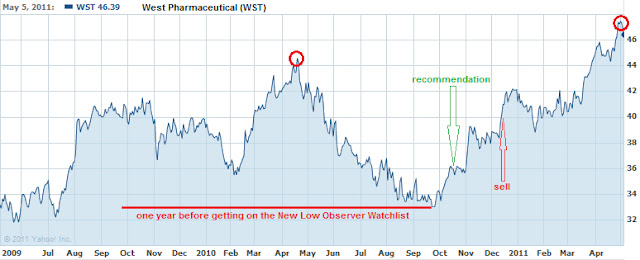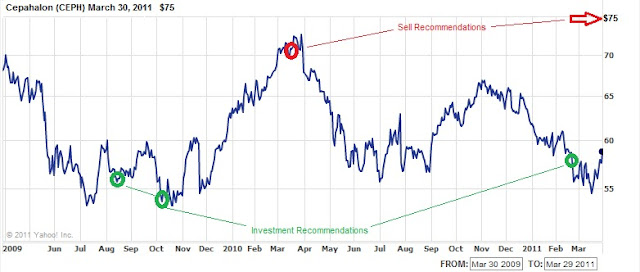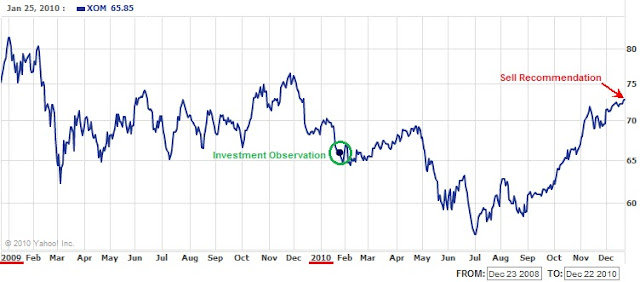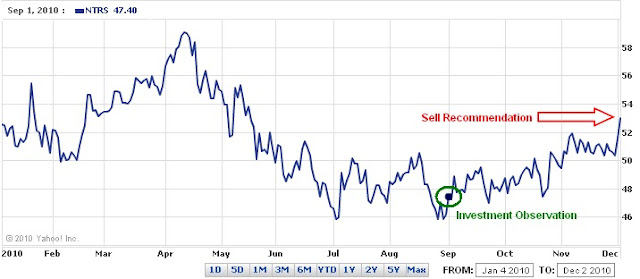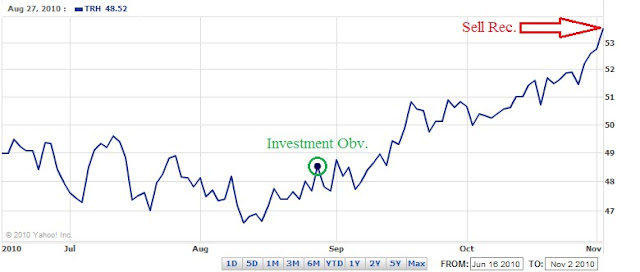One Investment Observation that we made is worth reviewing because it encompasses many fundamental techniques necessary for accounting for risk in bear markets. Our recommendation of Bank of Hawaii (BOH) on January 12, 2009 at the price of $37.76 is a prime example of risk adjusted investing. We’d like to think that this was among the boldest and well-planned recommendations that we’ve done. In this analysis, we’ll point out the specific elements that made this Investment Observation so unique.
First and foremost, the recommendation of a bank would seem to be completely out of left field for us since we have always intentionally shied away from the banking sector. Making our recommendation more usual was the fact that we were in the midst of a literal and figurative collapse in the banking industry. In January of 2009, it was hard to tell where the fire wasn’t going to spread next. After all, if you’d seen Fannie Mae, Freddie Mac, AIG, Merrill Lynch, Bear Stearns, Washington Mutual, and Lehman go off the deep end, who is to say that other regional banks weren’t next? However, to see such a well-run institution like BOH closing in on a new low was very hard to resist.
A favorite default reaction for a stock that is near a new low is to look at Value Line Investment Survey for a specific piece of information. In the legend box provided by Value Line, it indicates the most reliable measure of historical mean price that the stock trades at. Sometimes that measure is based on cash flow, earnings, earnings divided by interest rate, book value etc. Regardless of the measure, Value Line’s estimated mean value is quite reliable. If the stock is above or below the mean figure it helps provide a target that we can expect the price to revert to at some point in the future. The quality of the mean figure hinges on the quality of the stock. If for some reason there doesn’t seem to be any consistency in the Value Line estimate then we discard it outright and only use Dow Theory’s fair value as the substitute mean. However, we have found the Value Line estimate to be reasonably reliable for the majority of stocks that we track.
In our assessment of Bank of Hawaii, Value Line indicated that the mean price for BOH was 14 times earnings. At the time, full year 2008 trailing earnings were at $4.06. We only use full year trailing earnings; estimates of the future are not accepted unless they are lower than the previous full year’s data. The figures provided by Value Line gave us a mean price of $56.84 for where we could expect the price of Bank of Hawaii to eventually revert to. Depending on the quality of the company, our dreams are fulfilled if the stock in question goes back to the mean. This is also in accordance with Dow’s Theory that all stocks tend to gravitate to their fair value.
In terms of Dow Theory, we indicated that there were three downside targets. From our analysis of previous Dow Theory moves, we indicated that Bank of Hawaii demonstrated the capacity to retrace “…from the peak to between the 2nd and 3rd retracement levels…” This led us to believe that a purchase of the stock might be required “…between $30.70 and $20.87.” The actual lowest point reached on a closing basis for Bank of Hawaii on March 9, 2009 was $25.70. This was $0.08 less than the exact middle of $30.70 and $20.87.
Our next point of reference was if we were forced to hold the stock for “the long term.” Using this perspective, we surmised that Bank of Hawaii would have to be held for 15 years “...to recoup all [or some] that you have initially invested if you reinvest the dividends.” This is a big leap of faith considering that the dividend could be cut at any time. However, because BOH had demonstrated a consistent history of increasing dividends for over 30 years, it warranted the benefit of the doubt on this matter.
Since the stock price of Bank of Hawaii had been in a rising trend for an extended period of time it was difficult to gain new insight from looking at the chart. However, what we did notice was the surge in volume of shares traded when the stock was nearing a low. Given this pattern, we said:
“All we need now is a good collapse in the price to reassure us of the opportunity to buy. That opportunity might come in the wake of BOH falling below the 52-week low of $36.32 reached on November 21, 2008.”
Shortly afterwards, the stock price experienced an even greater surge in the volume which was accompanied by a steep decline. As mentioned before, Bank of Hawaii (BOH) had a closing low price of $25.70. Being tepid on the idea of holding a stock longer than necessary, we issued a sell recommendation on August 6, 2009.
Under the following scenarios, investor gains would have varied greatly if:
- bought at the observed price of $37.76 and sold on the recommended sell date, the gain would have been 19.47% on an annualized basis.
- bought at the low of $25.70 and sold at the top, the annualized gain would be 54%
- bought at the observed price of $37.76 and held to the present, the approximate gain would be 10.40% on an annualized basis.
Although we outlined exactly what eventually happened, we could never take credit for actually buying at the bottom and selling at the exact top. However, we can show that our ballpark estimates for Bank of Hawaii (BOH) reaching the mean price was fairly accurate. The peak in the price at $53.53 was within 6.18% of our price target of $56.84. Our estimated time to buy the stock between $30.70 and $20.87 was met with a closing low of $25.70 or $0.08 off of the exact middle of the two price points. Finally, we were able to usurp the 4.80% dividend yield by selling the stock with an annualized gain of 19%. We didn’t have to hold the stock “for the long term” to realize such opportunities.
Naturally, there are some critics who suggest that hiding behind “quality” stocks is only a ruse to speculate rather than invest. We understand and grapple with this consideration constantly. We know that most market commentators in the media lionize “The Warren Buffett Way” and vilify traders. Other critics might argue that if we “knew” so much then why didn’t we recommend Citigroup (C) or Bank of America (BAC)? However, our goal was, and always will be, to determine the lowest risk way to invest in the stock market with the widest margin for error with an annualized gain of 10% on each investment.











